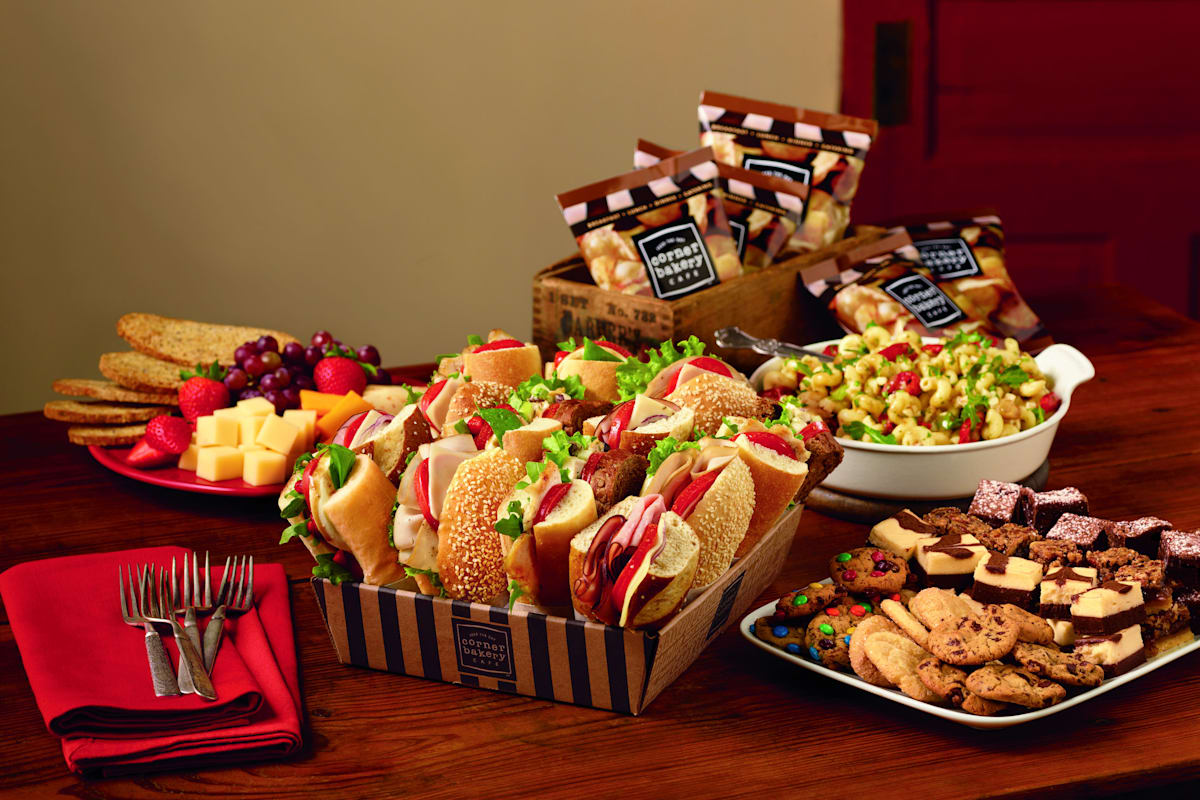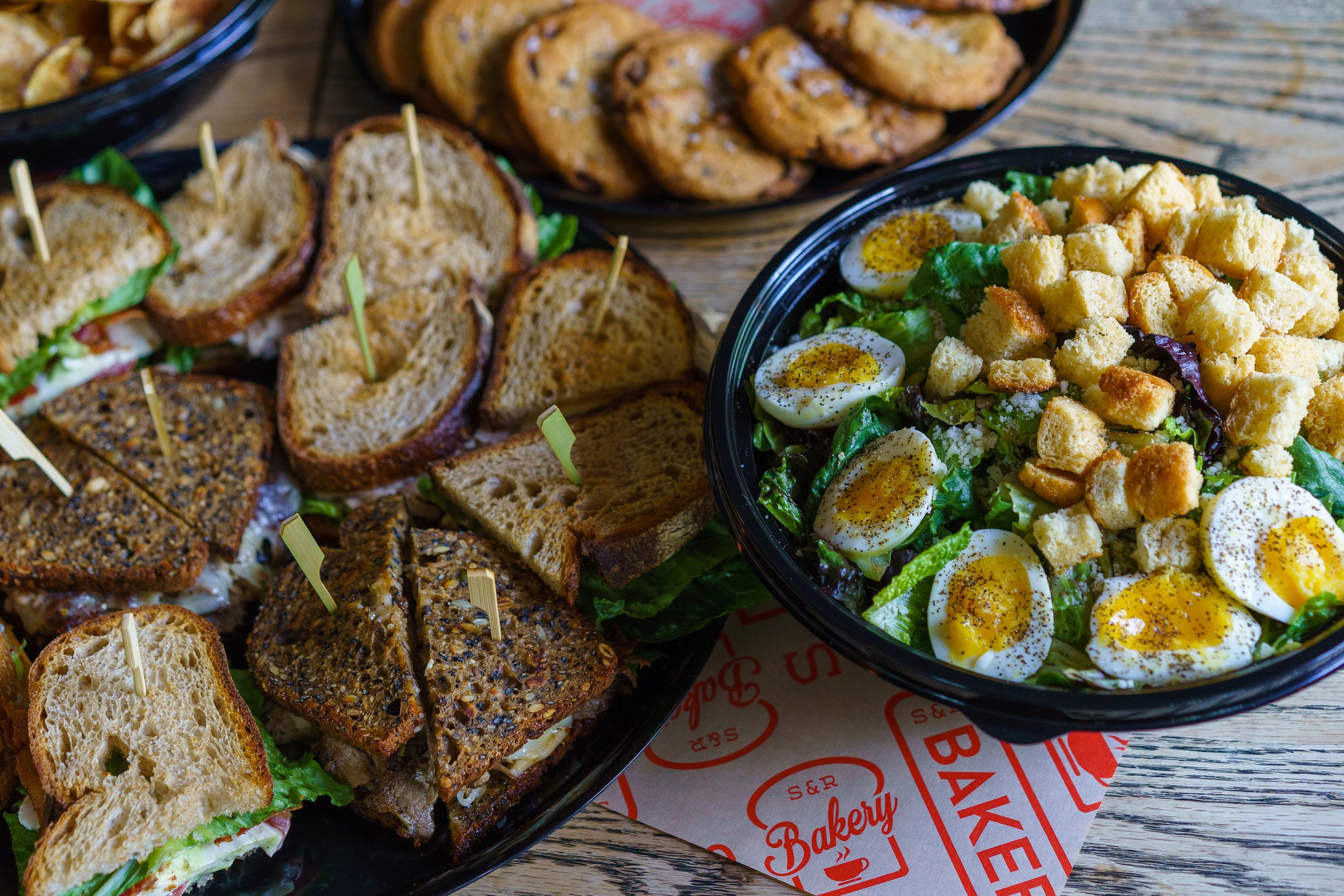Cost Effective Finger Food Catering Maddington for Any Event
Wiki Article
Comprehending the Art of Pastry Shop Products: From Newly Baked Breads to Alluring Pastries and Finger Foods
From the science behind the excellent loaf of bread, where fermentation and gluten development play essential roles, to the finesse needed for creating split breads, each element reveals an engaging narrative of craftsmanship. The flexibility of finger foods illustrates how taste and texture can be artfully incorporated to involve varied preference preferences.The Scientific Research of Bread Making
At the heart of every loaf of bread lies an interesting interplay of chemistry and biology. The process of bread making begins with the combination of flour, yeast, salt, and water-- each active ingredient playing a crucial role in the last product. Flour consists of proteins, mainly glutenin and gliadin, which, when combined with water, type gluten (Catering Maddington). This elastic network is vital for trapping gases produced throughout fermentation.
Yeast, a living microorganism, ferments the sugars present in the flour, creating co2 and alcohol while doing so. The carbon dioxide gas produces bubbles in the dough, triggering it to climb and develop a light texture. The temperature and moisture during fermentation substantially influence yeast task and, as a result, the bread's taste and texture.

Mastering Bread Strategies
How can one achieve the delicate equilibrium of texture and flavor that specifies extraordinary pastry? Mastering bread methods calls for a deep understanding of active ingredients, methods, and the scientific research behind them. Essential to this craft is the selection of high-grade ingredients-- flour, butter, sugar, and eggs-- each playing an essential function in the final item's flavor and structure.The method of lamination, which involves folding layers of dough and butter, produces the desired flakiness in pastries like croissants and smoke pastry. Accuracy in temperature level is vital, as butter should continue to be cool to guarantee ideal layers. Correct mixing methods, such as the creaming technique for cakes, ensure even consolidation of air and fat, resulting in a light and airy crumb.
Moreover, maintaining the ideal moisture degrees throughout cooking can considerably impact the end result, ensuring that pastries rise correctly and attain that golden-brown finish. The art of pastry likewise requires perseverance and method; each attempt boosts one's skill and understanding of the detailed balance called for to produce tempting pastries that delight the senses. Proficiency in these methods inevitably distinguishes a knowledgeable bread cook from an amateur.
Sorts Of Finger Foods
The world of cooking delights expands past pastries to encompass a wide variety of finger foods, which are celebrated for their ease and flexibility. These bite-sized treats are perfect for celebrations, offering a selection of flavors and structures that accommodate varied palates.
On the sweeter side, mini tarts and bite-sized cupcakes use a visit this site fascinating finish to any meal, appealing to those with a wonderful tooth. Cheese and charcuterie boards serve as a sophisticated selection, enabling guests to personalize their bites with a selection of meats, nuts, fruits, and cheeses.
Taste Profiles in Cooking
Cooking is a complex dance of flavor profiles that combines sweet, savory, and umami notes to develop a harmonious experience for the palate. Understanding these accounts is essential for bakers looking for to boost their developments.Sweet taste typically serves as the foundation in baked items, with sugars, fruits, and all-natural sweeteners boosting taste depth. Components such as chocolate and sugar present complicated sweet notes that can either control or enhance various other flavors. Alternatively, tasty elements, frequently found in pastries and breads, provide equilibrium and contrast. Ingredients like cheeses, herbs, and seasonings can change a basic dough into a multifaceted taste experience.
Umami, regularly ignored in baking, plays a considerable function in enriching tastes. Components such as aged cheeses, fermented products, or even certain nuts add to a full-flavored depth that boosts general taste.
Furthermore, the interaction of level of acidity from active ingredients like buttermilk or citrus passion can lighten up tastes, supplying a revitalizing counterpoint to sweetness. By thoughtfully combining these taste accounts, bakers can craft items that reverberate with diverse tastes buds, developing an extraordinary cooking experience. Inevitably, mastering taste accounts is vital to innovation on the planet of baking.
Vital Cooking Devices and Ingredients
Understanding taste accounts in baking sets the phase for picking the right tools and components that assist in the development of exceptional baked goods. The foundation of successful baking hinge on having necessary devices available. Trick things consist of blending bowls, gauging mugs, and spoons for accuracy, in this addition to a durable stand mixer or hand mixer for simple and easy blending. A trusted collection of baking frying pans-- such as sheet frying pans, loaf pans, and cake frying pans-- is vital for accomplishing wanted textures and shapes.In terms of active ingredients, top quality issues substantially. Flour serves as the backbone of a lot of recipes; picking the ideal type-- be it bread, bread, or all-purpose flour-- can significantly influence the result. Sugar not just sweetens however also adds to appearance, while eggs serve as binders and raising representatives. Baking powder and cooking soda are essential for producing lift in cakes and pastries.
Additionally, including flavor enhancers like vanilla remove, spices, and citrus passion can boost your creations. By making sure accessibility to these fundamental devices and active ingredients, bakers can with confidence begin on their culinary journey, crafting a varied variety of delightful baked items.
Conclusion
In final thought, the art of pastry shop items encompasses a profound understanding of both clinical principles and innovative strategies. Proficiency in bread production, bread prep work, and finger food presentation reveals the detailed partnerships in between procedures and active ingredients. Furthermore, checking out diverse flavor profiles enhances the baking experience, while necessary devices and components give the structure for success. Inevitably, the captivating world of baking thrives on the unified interaction of scientific research and creative thinking, causing a myriad of fascinating cooking developments.How can one attain the delicate balance of appearance and flavor that specifies exceptional pastry? Fundamental to this craft is the selection of top quality ingredients-- flour, butter, sugar, and eggs-- each playing an important role in the last product's taste and structure.

Understanding taste profiles in baking collections the phase for picking the right devices and active ingredients that promote the creation of extraordinary baked products. Checking out varied taste accounts improves the baking experience, while crucial devices and active ingredients give the structure for success.
Report this wiki page